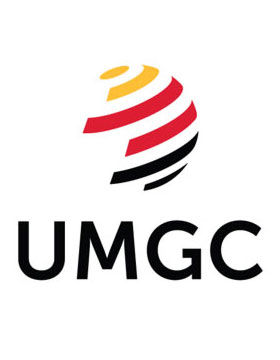Not everyone knows what profession they want to pursue from a young age. Others have a successful career for a decade or more, and then decide to switch gears and challenge themselves with a career change. For these types of professionals, historically the University of Maryland Global Campus (UMGC) has been a haven, as its online model and tradition of educating individuals around the world is a perfect fit for working professionals and career changers.
UMGC’s innovative educational approach is also a perfect fit for those individuals who have decided to embark on a teaching career. UMGC’s Master of Arts in Teaching is “designed for students with a bachelor's degree who want to earn Maryland teaching certification in secondary education in subject areas including English, history, social studies, biology, chemistry, earth/space science, physics, math, computer science, Spanish, French, German, and Mandarin Chinese,” according to UMGC’s website.
According to Dr. Monica Simonsen, program director of UMGC’s Education Department, most of the program’s students are “career changers who want to learn how to apply their professional experience and knowledge to the classroom. UMGC is well prepared to help career changers, as we have a long history of doing this, and the online format is perfect for working professionals.”
UMGC’s MAT program is also well suited to help address the teacher shortage felt nationwide and here in Maryland. Simonsen says that the latest statistics show 2,000 teacher vacancies in Maryland, but says that some districts are struggling more than others. The result, she says, is consolidated and crowded classrooms and long-term substitute teachers fulfilling the role usually held by a certified experienced teacher.
“One way to address the shortage is to grant conditional certifications to aspiring teachers who have met most of their educational requirements and place them in a classroom. They typically have three to four years to complete all of their requirements or risk having their certification revoked,” Simonsen says. She notes that this fall’s incoming cohort – the largest since she has been at UMGC – consists of 90% of students who are conditionally certified teachers. “We’ve had to pivot our educational approach as previously, we’d educate the students with the understanding that they would be placed in a classroom in a couple of years, but now our students are already teaching in the classroom.” She says that the MAT’s intense one-on-one coaching element has been especially important during this change.
Simonsen says that UMGC’s MAT program currently has students in school districts across Maryland, as well as out of state students and even those teaching on military bases overseas. She says that the teacher shortage is especially bad in rural districts of Maryland – Dorchester County, for example has a 18% teacher vacancy rate – so UMGC’s online format is perfect for those areas, as traveling across the Bay Bridge to attend classes at a traditional brick and mortar campus setting in the Baltimore metro area is not feasible for these students.
“Many of our students are craving the stability found in the educational profession, while others helped their own children with their schoolwork during Covid, becoming quasi teachers themselves during remote learning, so they became interested,” she says. The MAT program is also a good fit for veterans, she says, as many of them already possess key skills such as organization and time-management. “One of our students was a physicist for 15 years for NASA who decided to pivot to teaching.” She also notes that many immigrants come to the U.S. with professional credentials that may not transfer, so teaching becomes an option.
Simonsen notes that for those students who are considering a career change to teaching, being a substitute teacher is a great way to try out the profession and can be lucrative, too.
When asked about some of the reasons for the teacher shortage, Simonsen points to several factors. One is the normal attrition due to retirements. Teacher salaries is another barrier for some, while some teachers retired early after burning out due to constant changes from remote to hybrid to in-person learning due to Covid. “Also, teachers have a lot of transferable skills that can be applied to other professions, and with many jobs still allowing remote work with flexibility, that is a draw, too,” she says.
One positive development that may help address the teacher shortage, Simonsen says, is the passing of the Blueprint for Maryland’s Future legislation in Maryland that includes
comprehensive changes to Maryland’s early childhood and public schools with a significant increase in educational funding. The program also increases the salary by $10,000 of National Board-Certified educators who are actively teaching in Maryland public schools. In addition, National Board-Certified Teachers working in a low performing school will receive an additional $7,000 annually.
Other financial incentives include:
- 10% state increase in baseline teacher salaries across the board, phased in by July 1, 2024
- $60,000 starting salary for teachers by July 1, 2029
- Expanded opportunity for loans and scholarships for students/teachers who teach in schools with high concentrations of poverty
Although UMGC’s program is online, students are not isolated. The virtual coaching sessions provide an opportunity for students to record themselves teaching a class, and then getting critical feedback from their coaches on ways to improve. “We may also have a situation where we have three students – one in Baltimore City, one in Charles County and one on a military base in Germany – and they can share their videos with each other to learn from each other,” Simonsen says. “This can be helpful as teachers develop their own teaching styles … a retired military officer, for example, may have a different teaching style than someone who worked for 20 years as a social worker. Our goal is to support them and create pathways for those who want to teach here in Maryland.”
This article was written by Greg Alexander for the Baltimore Sun's quarterly education supplement
